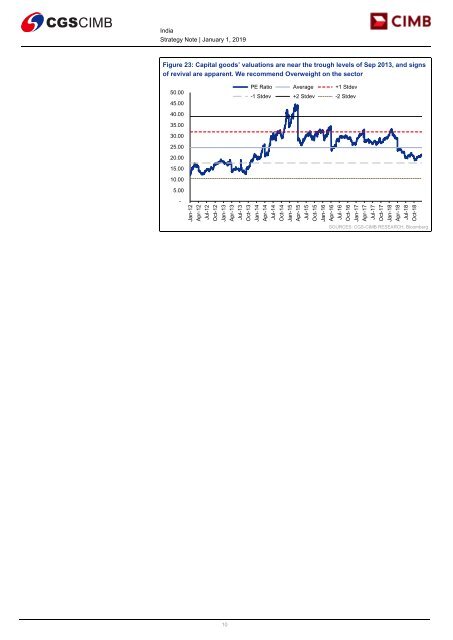You also want an ePaper? Increase the reach of your titles
YUMPU automatically turns print PDFs into web optimized ePapers that Google loves.
Christopher Wood christopher.wood@clsa.com +852 2600 8516<br />
Figure 14<br />
US total business sales growth<br />
15<br />
10<br />
(%YoY)<br />
US total business sales<br />
5<br />
0<br />
-5<br />
-10<br />
-15<br />
-20<br />
1993<br />
1994<br />
1995<br />
1996<br />
1997<br />
1998<br />
1999<br />
2000<br />
2001<br />
2002<br />
2003<br />
2004<br />
2005<br />
2006<br />
2007<br />
2008<br />
2009<br />
2010<br />
2011<br />
2012<br />
2013<br />
2014<br />
2015<br />
2016<br />
2017<br />
2018<br />
Source: CLSA, US Census Bureau<br />
However, set against this positive remains the growing evidence that higher interest rates are<br />
impacting the American economy, and this includes households as well as corporations. In this<br />
respect, the macro data showing a significant decline in US household debt relative to GDP in this<br />
cycle (see Figure 15) does not incorporate the reality of the extremely unequal distribution of<br />
income in America.<br />
Figure 15<br />
US corporate debt and household debt as % of GDP<br />
47<br />
46<br />
45<br />
(%GDP)<br />
US non-financial corporate debt % GDP<br />
US household debt % GDP (RHS)<br />
(%GDP)<br />
110<br />
100<br />
44<br />
43<br />
90<br />
42<br />
80<br />
41<br />
40<br />
70<br />
39<br />
38<br />
60<br />
37<br />
1990<br />
1991<br />
1992<br />
1993<br />
1994<br />
1995<br />
1996<br />
1997<br />
1998<br />
1999<br />
2000<br />
2001<br />
2002<br />
2003<br />
2004<br />
2005<br />
2006<br />
2007<br />
2008<br />
2009<br />
2010<br />
2011<br />
2012<br />
2013<br />
2014<br />
2015<br />
2016<br />
2017<br />
2018<br />
Source: Federal Reserve – Flow of Funds Accounts<br />
50<br />
This phenomenon was highlighted by the Federal Reserve’s triennial Survey of Consumer Finance<br />
(SCF) published in September 2017 which found that the top 1% of Americans have a larger share of<br />
wealth, in terms of net worth, than the bottom 90%. Thus, the share of the top 1% rose from 36.3%<br />
in 2013 to 38.6% in 2016, compared with a 22.8% share for the bottom 90%. The reality is that<br />
most Americans are still living month-to-month, which is why the stresses from monetary tightening<br />
are best shown by the rising interest payments made by American households. And when interest<br />
rates have been so low any rise at all is significant in percentage terms. Thus personal interest<br />
payments, excluding mortgages, rose by 14% YoY in November and are up 55% since mid-2013 (see<br />
Figure 16).<br />
Thursday, 3 January 2019 Page 8
















